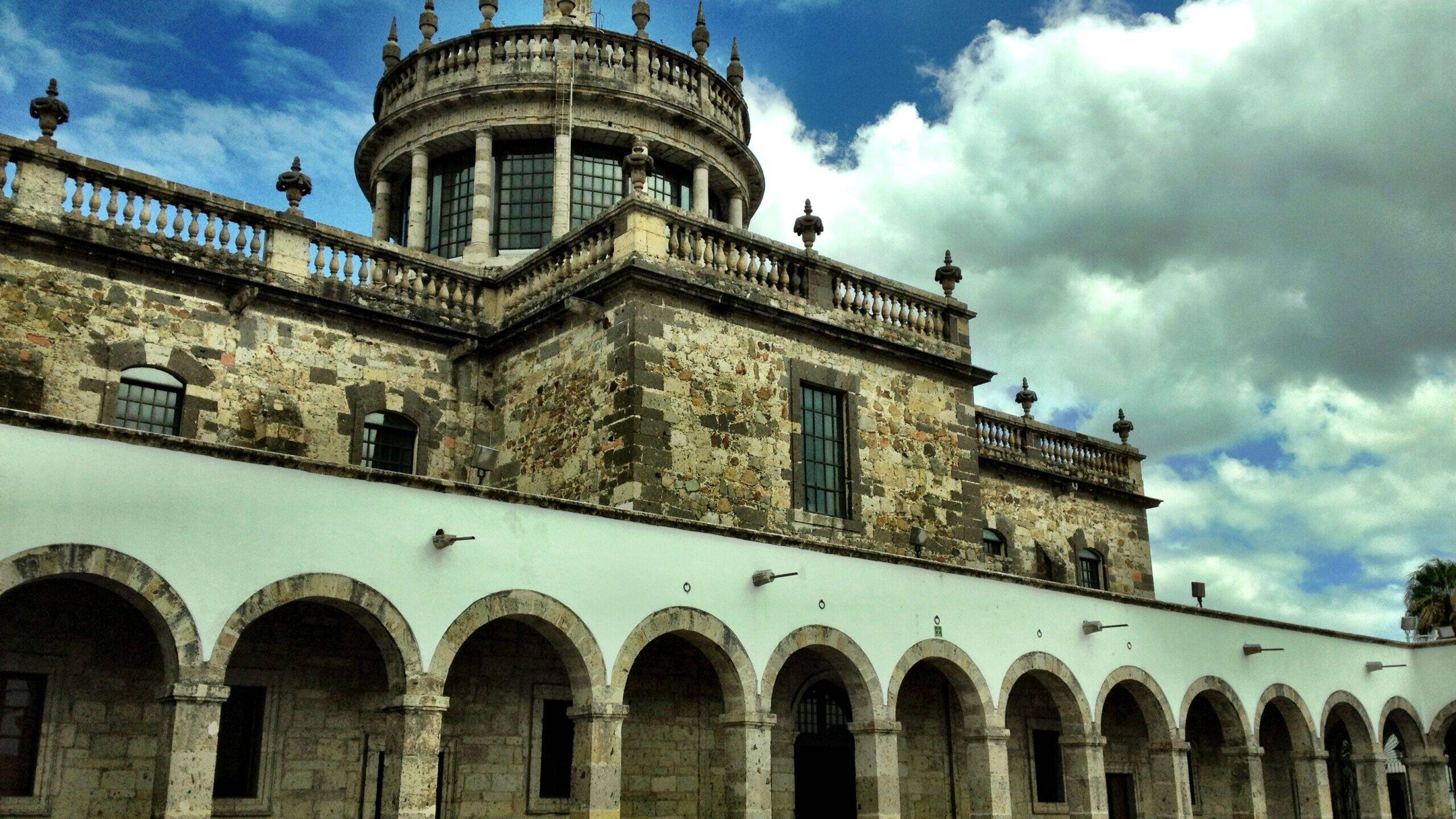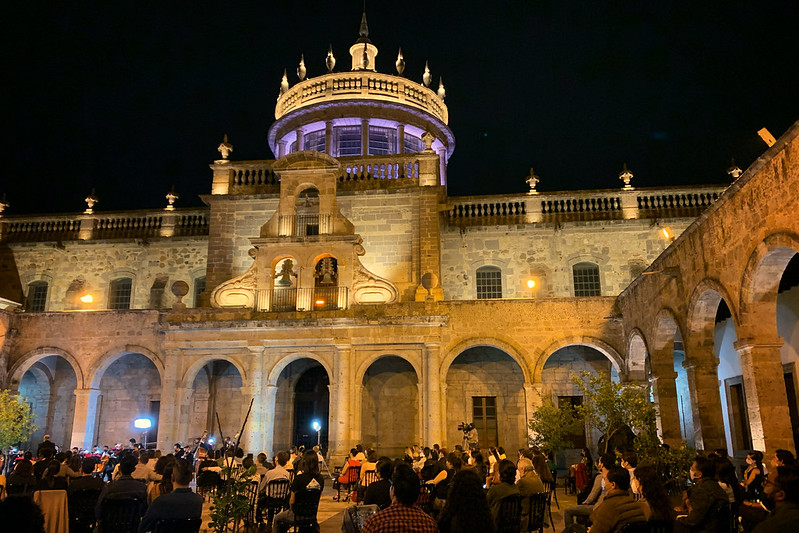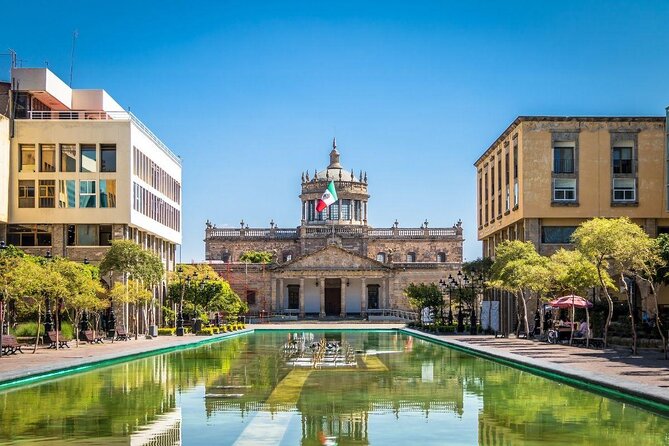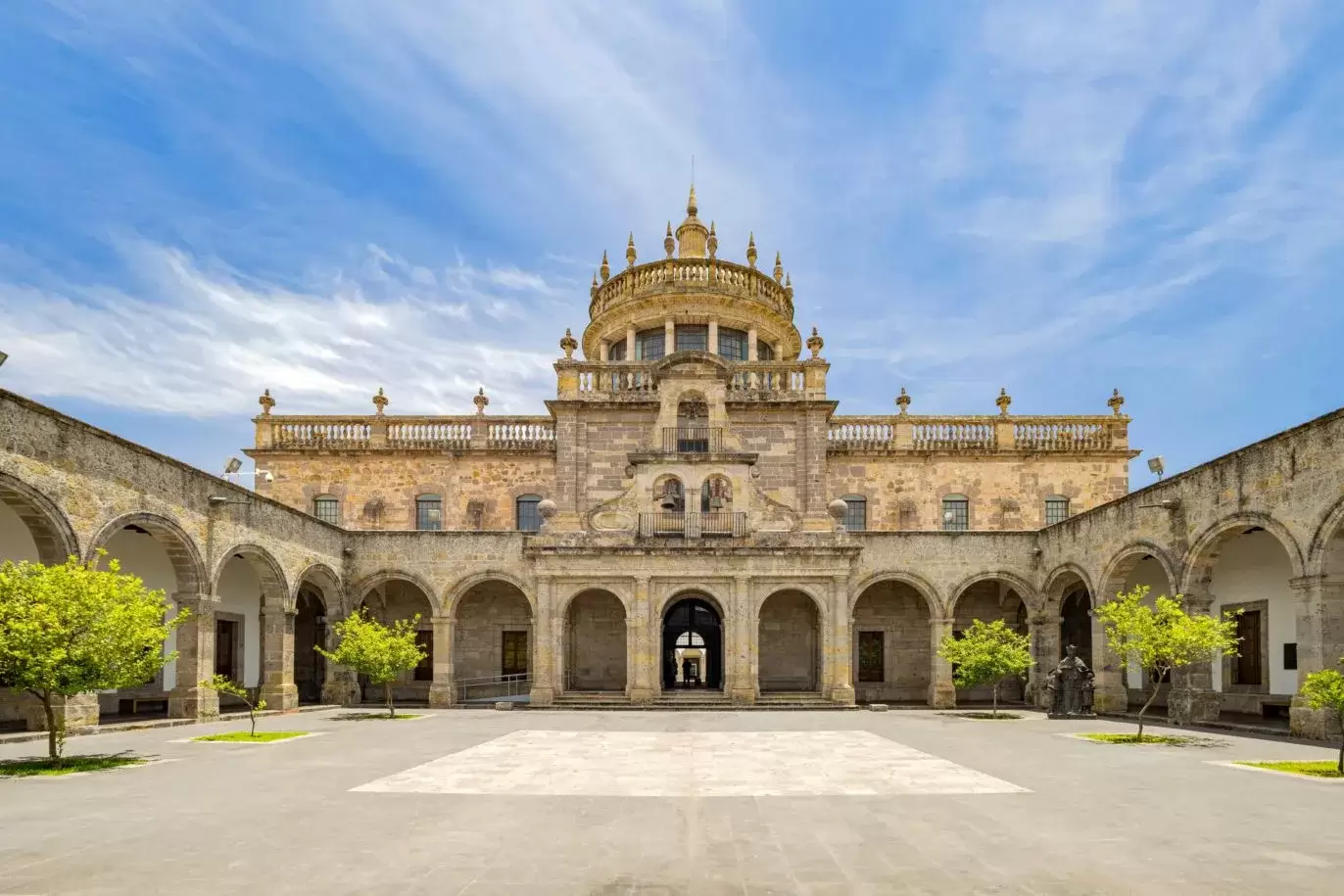The Hospicio Cabañas, also known as the Cabañas Cultural Institute, is a museum located in the San Juan de Dios neighborhood of the city of Guadalajara, Jalisco, Mexico. In 1810 the building opened its doors as “Casa de la Caridad y la Misericordia” (House of Charity and Mercy), as Instituto Cultural Cabañas on November 13, 1980.
Its headquarters is a property of patrimonial value for the city, for its architectural beauty and cultural and historical importance. It served as a home for orphans from 1810 to 1980. It houses 57 fresco murals -made from 1938 to 1939- by the artist José Clemente Orozco. These are located inside the main chapel, among which stands out The Man of Fire, considered the muralist’s masterpiece. It was declared a World Heritage Site by UNESCO in 1997.
The main architect of this hospice, initially named “Casa de la Misericordia” (House of Mercy), was Bishop Juan Cruz Ruiz de Cabañas, who arrived from Spain to the capital of Nueva Galicia in 1796, in order to take the place left by Fray Antonio Alcalde y Barriga after his death. Although the bishop’s original project was to create a foundling home, King Charles IV ordered -through the certificate issued in San Ildefonso on September 5, 1803- the expansion of the organization’s purpose and the admission of the elderly of both sexes, cripples, the habitually ill, orphans and poor walkers, as well as to provide education and correction to minors. The design of the building was the work of one of the architects of the time, the Valencian Manuel Tolsá. Construction began in 1805 with the participation of José Gutiérrez, academician of merit of the Academy of San Carlos, with the material direction, and the builder Pedro José Ciprés. The building was erected on high ground far from the city, whose nucleus was what was known as “Solar, house and orchard of ‘El Sabino’”, belonging to the convent of San Juan de Dios, as well as on the surrounding land acquired by Cabañas from Miguel Navarro and a small lot that was ceded by the city council free of charge and in perpetuity. The perimeter of the land formed an irregular quadrilateral, measuring: 465 1/3 varas on the North; 493 2/3 on the South; 159 varas on the East, and 126 varas on the West.
UNIQUE ARCHITECTURE
The Reform laws and the consequent nationalization of ecclesiastical property in 1859 affected the hospice. It was left in the hands of the order of the Sisters of Charity, who used it as a hospital for the needy. Under their administration, the hospice experienced its golden age, since they were able to implement the original ideals of Bishop Cabañas in building an institution to assist the needy. They renamed the building Hospicio Cabañas in honor of its founder. The nuns’ management ended in 1874, at the time of the disentailment of ecclesiastical property in Mexico, at the same time that the clergy withdrew the donation they made annually to support the place. It was then when the civil authorities took over.
In 1875 there was an earthquake that damaged the structure of the hospice, which was later intervened. In 1910 the hospice returned to its humanitarian work, but it did not last because the building itself was affected by the political changes of the nation. Since 1912 the school for girls and boys was administered by the state government. With the political changes after the Mexican Revolution, attempts were made to improve the educational offerings and infrastructure.
The presentation to UNESCO of the study to be declared a World Heritage Site was carried out by the Secretary of Culture of the Government of Jalisco, when Dr. Guillermo Schmidhuber de la Mora was Secretary of Culture and under the General Coordination of Carlos Gutiérrez Arce. UNESCO awarded the famous designation in 1997.



